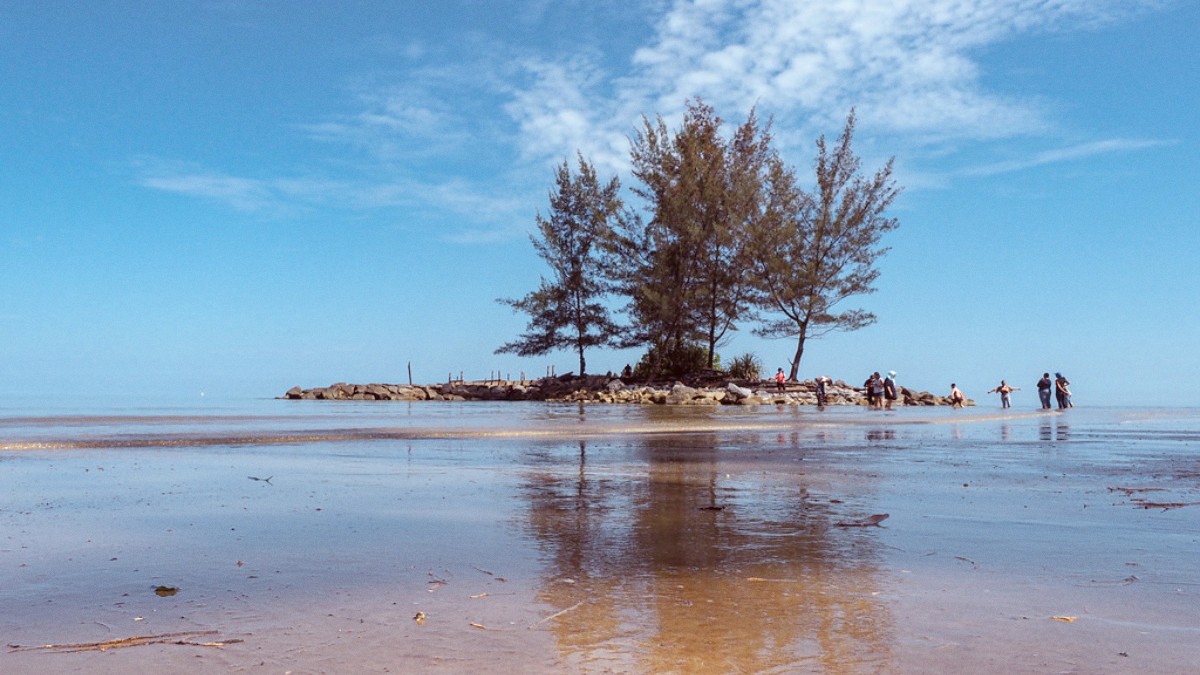
Malaysian Borneo Sarawak, Malaysia
Here, you discover a city with a rich history forged by oil, yet surrounded by some of the world's most biodiverse ecosystems. Miri invites travelers to uncover its stories, savor its unique cuisine, and witness the splendor of Borneo.
Miri sits on the northeastern coast of Sarawak, Malaysia, on the vast island of Borneo. Its location at the mouth of the Miri River gives direct access to the South China Sea. This coastal position shapes much of its character and economy. The city works as a handy base for exploring several renowned national parks.
To the south, discover the ecological richness of Lambir Hills National Park and the historical grandeur of Niah National Park. Miri also serves as a common starting point for flights to the distant, yet awe-inspiring, Mulu National Park. The city’s coordinates, approximately 4°23′ North latitude and 113°59′ East longitude, place it firmly within the equatorial belt. This geographic position presents Miri its consistent warm temperatures and high humidity year-round, traits welcoming for rainforest exploration. The city's coastal stretch offers beaches and marine parks, a pleasant contrast to the dense jungle interior.
Miri’s past connects deeply with the petroleum industry. Before 1910, Miri was a quiet fishing village. That year, Royal Dutch Shell drilled Malaysia's first oil well, nicknamed "The Grand Old Lady." This discovery forever changed Miri. It swiftly grew into a bustling oil town, drawing people from across the region and beyond. Oil remains a main driver of Miri's economy.
During World War II, Japanese forces occupied Miri from 1941 to 1945. This period left a lasting mark on the city and its people. After the war, Miri resumed its development, fueled by oil and gas. On May 20, 2005, Miri achieved city status, becoming Sarawak's second official city. This milestone recognized its growth and importance as a regional hub.
A quiet fishing village.
Malaysia's first oil well, "The Grand Old Lady," drilled by Royal Dutch Shell.
Japanese occupation during World War II.
Achieved city status, Sarawak's second official city.
Oil, gas, timber, palm oil, and a rising eco-tourism destination.
Today, while oil remains prominent, Miri also gains recognition for its timber, palm oil, and its rising reputation as an eco-tourism destination.
The city’s economy relies heavily on several pillars. Petroleum and gas remain main industries, a legacy of "The Grand Old Lady." Timber and palm oil also contribute significantly to the regional economy.
Increasingly, tourism gains importance, drawing travelers to Miri’s natural attractions and cultural experiences. This blend of traditional industries and growing tourism creates a dynamic environment for visitors to explore.
The city represents a place where industrial heritage meets natural wonder, presenting visitors a chance to see both aspects of its story.
Miri, a thriving urban center in Sarawak, presents visitors a glimpse into the heart of Malaysian Borneo. Its current population, within the Miri Division, is around 356,900, based on the 2020 Census. The Miri City Council's jurisdiction spans approximately 997.4 square kilometers, a considerable area that combines urban development with natural landscapes.
The main language spoken is Bahasa Malaysia, the official language of the country. However, English is widely understood and spoken, specifically in tourist-focused areas, hotels, and among younger generations, which makes communication straightforward for many international visitors.
Around 356,900 within Miri Division.
Malaysia Standard Time (MST), UTC+8.
Malaysian Ringgit (MYR or RM).
The main language spoken is Bahasa Malaysia, the official language of the country. However, English is widely understood and spoken, specifically in tourist-focused areas, hotels, and among younger generations, which makes communication straightforward for many international visitors.